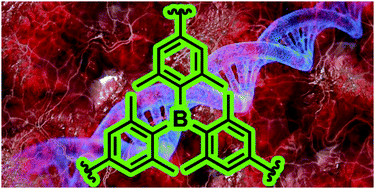Applications of triarylborane materials in cell imaging and sensing of bio-relevant molecules such as DNA, RNA, and proteins†
Abstract
Triarylboranes have been known for more than 100 years and have found potential applications in various fields such as anion sensors and optoelectronics, for example in organic light emitting diodes (OLEDs), field effect transistors (OFETs), and organic photovoltaic devices. However, biological applications, such as bioimaging agents and biomolecule sensors have evolved much more recently. This review summarises progress in this relatively young field and highlights the potential of triarylboranes in biological applications.

- This article is part of the themed collection: Special issue in honour of Seth Marder


 Please wait while we load your content...
Please wait while we load your content...